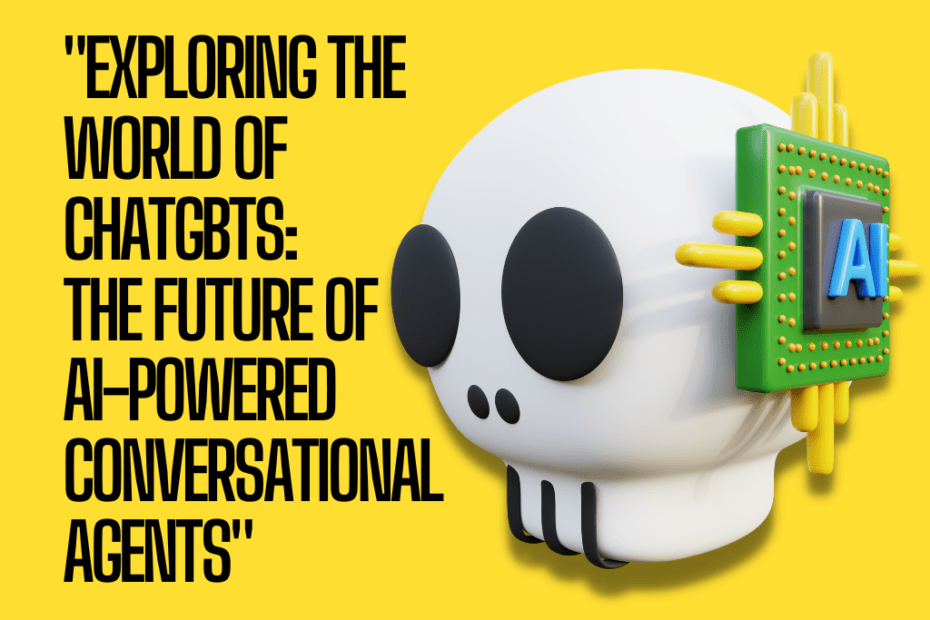Chatbots, also known as conversational agents or virtual assistants, are computer programs designed to simulate conversation with human users through artificial intelligence (AI).
They can be used for a variety of purposes, including customer service, information gathering, and entertainment.
Chatbots are often integrated into messaging apps, websites, and mobile apps to provide users with quick and convenient access to information or assistance.
One type of chatbot that has gained popularity in recent years is the chatbot based on the GPT-3 (Generative Pre-trained Transformer 3) language model developed by OpenAI.
These chatbots, known as ChatGBTs, are trained on a massive dataset of human-generated text and use AI techniques to generate responses that are similar to how a human would respond in a given situation
In this blog post, we will explore the basics of ChatGBTs, including how they work, and their capabilities.
What is a ChatGBT?
A chatGBT is a chatbot that is powered by the GPT-3 language model developed by OpenAI.
The GPT-3 model is a deep learning neural network that is trained on a massive dataset of human-generated text and is designed to generate human-like responses to a given input.
The GPT-3 model is trained using a technique called unsupervised learning, which means that it is not given explicit examples or labels to learn from.
Instead, it is fed a large dataset of text and learns to generate responses based on the patterns and structures it finds in the data.
As a result, the GPT-3 model is able to generate responses that are more human-like and varied than those of other chatbots that are trained using more traditional methods.
The ChatGBT chatbot is essentially a program that interfaces with the GPT-3 model and allows users to communicate with it through text or voice input.
The chatbot receives a user’s input, sends it to the GPT-3 model, and receives a response from the model, which it then presents to the user.
How Do ChatGBTs Work?
The GPT-3 model is trained using a technique called transformers, which are a type of neural network architecture designed for natural language processing tasks.
The model is pre-trained on a large dataset of human-generated text, which allows it to learn the patterns and structures of human language.
When a user interacts with a chatGBT, the chatbot sends the user’s input to the GPT-3 model, which processes the input and generates a response based on the patterns and structures it has learned from the training data.
The response is then returned to the chatbot, which presents it to the user.
The ChatGBT chatbot is able to handle a wide range of input and can generate responses that are appropriate for the context of the conversation.
For example, if a user asks a chatGBT about the weather, the chatbot might generate a response like “It looks like it will be sunny and warm today.”
If the user follows up with a question about the temperature, the chatbot might respond with a more specific answer like “The forecast is for a high of 75 degrees Fahrenheit.”
Capabilities of ChatGBTs
One of the key advantages of ChatGBTs is their ability to generate responses that are similar to how a human would respond in a given situation.
This makes them well-suited for tasks that require a high degree of natural language processing, such as customer service, information gathering, and entertainment.
Can AI replace content creators?
There has been a lot of discussion about whether artificial intelligence (AI) could potentially replace human content writers in the future.
While AI has made significant advancements in the field of natural language processing, it is still not capable of fully replacing human content writers at this time.
One of the main limitations of AI in content writing is its inability to fully understand and convey the nuances and subtleties of human language.
While AI can generate coherent and grammatically correct text, it may struggle to accurately convey tone, emotion, or the intended meaning of a piece of writing.
In addition, AI may not be able to fully replicate the creative process of human content writers.
While AI can generate text based on patterns and structures it has learned from a dataset, it may not be able to come up with original ideas or perspectives that are unique to a human writer.
That being said, AI can be a useful tool for content writers, as it can assist with tasks such as data analysis, keyword optimization, and proofreading. However, it is unlikely that AI will fully replace human content writers in the foreseeable future.
Would you read a blog written by an AI?
Well, You just did because every word that you just read is written by an AI. This whole blog from the title to the above paragraph is all written by ChatGBT by just asking questions.

This is incredible, isn’t it?
I also asked it to generate the title for this blog!

Conclusion
In 2022, we have seen many practical applications of AI like Lensa AI and DALL-E this year. These AI tools are very useful for content creators, and businesses but they have their limitations.
Also, they are right now in a maturing period. As you might have noticed that it repeated some sentences in the next heading paragraphs. These AI tools are not perfect and have some room for errors.
It is too early to say what the future will look like for these tools.
Sign up to receive the latest marketing, investing, and technology articles in your inbox.


Pingback: 5 Ways Digital Marketers Can Use ChatGPT - Ibrahim Manzar